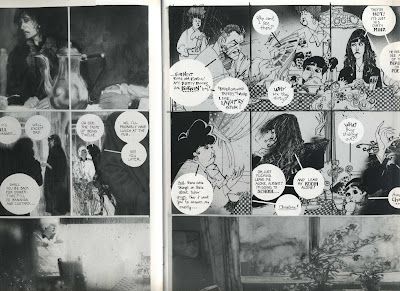I Don’t Read Comics Anymore
by T. Hodler
Wednesday, February 25, 2009
Read Comments (45)
 Sorry about that. It makes it hard to think of things to say about them, though.
Sorry about that. It makes it hard to think of things to say about them, though.
Actually, I’m exaggerating. I read and mostly liked the two new Urasawa series that finally got published last week, and re-read and loved the Tezuka story that one of them adapted. I still don’t have anything to say about them, though.
So how about this instead?
1. Paul Karasik can still surprise me, which surprises me. Check out his take on the above Jimmy Olsen cover over at the Covered blog.
2. I like a lot of Alan Moore’s stuff, but have recently gotten tired of reading all the articles about how he doesn’t like movies made of his comics. Not that his stance bothers me, but I’ve heard it a million times now, and don’t understand why the entertainment press still thinks it’s so shocking and interesting. So it was funny (to me) that when I read the latest big Alan Moore interview, this part jumped out at me as being particularly enjoyable:
One of my big objections to film as a medium is that it’s much too immersive, and I think that it turns us into a population of lazy and unimaginative drones. The absurd lengths that modern cinema and its CGI capabilities will go in order to save the audience the bother of imagining anything themselves is probably having a crippling effect on the mass imagination. You don’t have to do anything. With a comic, you’re having to do quite a lot. Even though you’ve got pictures there for you, you’re having to fill in all the gaps between the panels, you’re having to imagine characters voices. You’re having to do quite a lot of work. Not quite as much work as with a straight unillustrated book, but you’re still going to do quite a lot of work.
I think the amount of work we contribute to our enjoyment of any piece of art is a huge component of that enjoyment. I think that we like the pieces that engage us, that enter into a kind of dialog with us, whereas with film you sit there in your seat and it washes over you. It tells you everything, and you really don’t need to do a great deal of thinking. There are some films that are very, very good and that can engage the viewer in their narrative, in its mysteries, in its kind of misdirections. You can sometimes get films where a lot of it is happening in your head. Those are probably good films, but they’re not made very much anymore.
I didn’t enjoy it so much because of his critique of film—which I think (or thought) was pretty banal and almost conventional wisdom at this point (Godard’s work isn’t done, I guess)—but because it just seems so refreshing after reading so many articles and interviews with comic-book people who always seem to be trying to pump up comics by saying they’re just like movies, or could make great movies, or that the reason Will Eisner is great is because he used tricks from the movies, etc. It’s nice to hear someone involved in comics who doesn’t have an inferiority complex about them, and just flat out says they’re better, and on top of that, movies are bad for your brain.
Also, usually I get all bent out of shape when someone admits to not paying close attention to comics and movies for a decade or so before turning around and bashing them on and on, but I have to admit this time I was kind of amazed at how accurate Moore was. (Though admittedly his critiques apply mostly to the superhero and blockbuster varieties.) Maybe that’s a power you get when you’re a wizard.
On the other hand, I tried again this winter, and I still can’t get through Promethea. What a chore. It seems like being a wizard has its bad sides, too.













